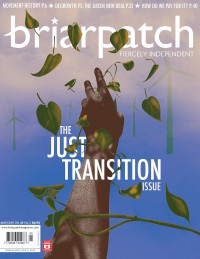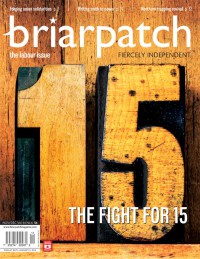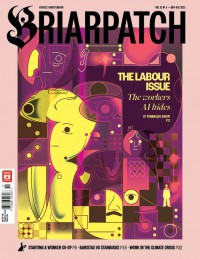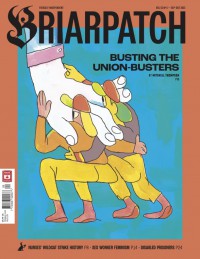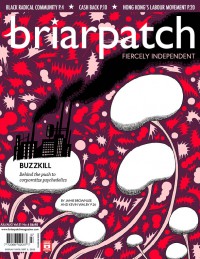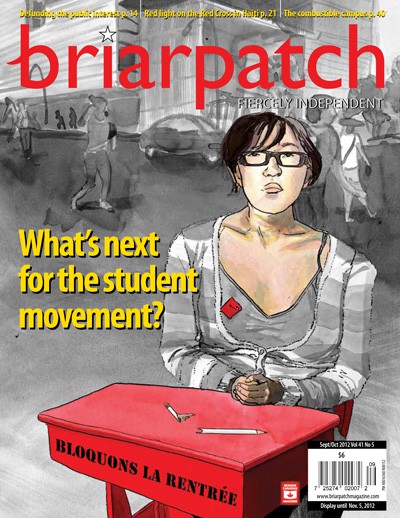
With the country’s largest reserves of oil, natural gas, uranium, and potash, much of which is found on Indigenous land, the Prairies will continue to be at the front lines of capitalist expansion for years to come, and are poised to become a hub of resistance. In this issue, Briarpatch imagines the West as a different kind of “land of opportunity.”
Add To Cart $7.95
-
 Magazine
MagazineLetter from the editor
With the country’s largest reserves of oil, natural gas, uranium, and potash, much of which is found on Indigenous land, the Prairies will continue to be at the front lines of capitalist expansion for years to come, and are poised to become a hub of resistance. It’s time for us to imagine the West as a different kind of “land of opportunity.”
-
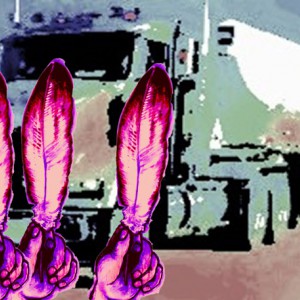 Magazine
MagazineFractured land
The first question asked when the issue of fracking on Kainai territory is presented to new ears is often, “How could this happen?” It is a difficult question to answer, but there are four major players: the gas and oil companies; government, both provincial and federal; the Blood Tribe chief and council; and the Blood Tribe member population.
-
 Magazine
MagazineLand rush
Amid skyrocketing food prices, climate-related instability, and declining soil and water resources, wealthy investors have begun to size up the world’s farmland as both an investment opportunity and a hedge against food crises and political turbulence. Saskatchewan’s farmland has gained a particularly noteworthy reputation, making the province a global hot spot for farmland investment.
-
 Magazine
MagazineRegina’s boom hits close to home
This is the new Saskatchewan, a province of economic growth and prosperity, a place of “amazing opportunities” according to the province’s Enterprise Minister Jeremy Harrison.
-
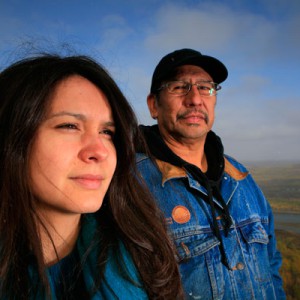 Magazine
MagazineAwaiting justice
For three decades, the traditional territory of the Lubicon Cree in northern Alberta has undergone massive oil and gas development without the consent of the Lubicon people and without recognition of our Aboriginal rights.
-
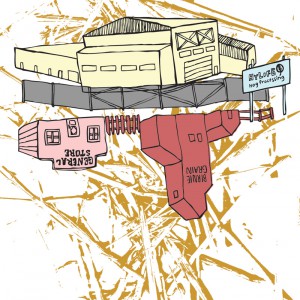 Magazine
MagazineLiving the HyLife
Over the past 40 years, increasing numbers of Prairie towns and villages are “dying” as people leave in droves to find work in the city. But aggressive recruitment campaigns by the hog industry are now re-populating and transforming the demographics of some of Manitoba’s smaller urban centres. What do these changes mean for these once-stereotypical Prairie towns and the growing populations of economic migrants who now call them home?
-
 Magazine
MagazineFollow the yellowcake road
On October 14, 2011, the University of Saskatchewan board of governors formally approved the incorporation of the Canadian Centre for Nuclear Innovation (CCNI) “to stimulate new research, development and training in advanced aspects of nuclear science and technology.” Tracing corporate connections and developments behind the scenes shows how a coordinated strategy can be implemented largely outside public purview and beyond generally accepted public accountability.
-
 Magazine
MagazineFlooded and forgotten
Around much of northern Manitoba, “hydro” is a dirty word, and for good reason. These projects have reconfigured the landscape of the entire region, drying whole rivers and engorging lakes.
-
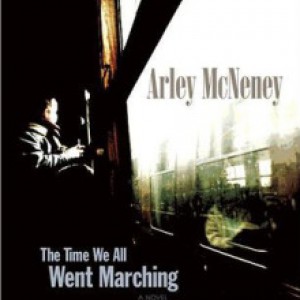 Magazine
MagazineOn to Ottawa in marvelous, meandering prose
In June 1935, hundreds of unemployed men took to the rails in what was dubbed the On to Ottawa Trek. The Time We All Went Marching is the story of one woman on the cusp of change.
-
_300_300_90_s_c1.jpg) Magazine
MagazineSame fight, new foes
In the summer of 1962, Saskatchewan was beset by a doctors’ strike intent on preserving physician privileges and opposing public health care. Fifty years later, Canada’s medicare system is again under threat.



